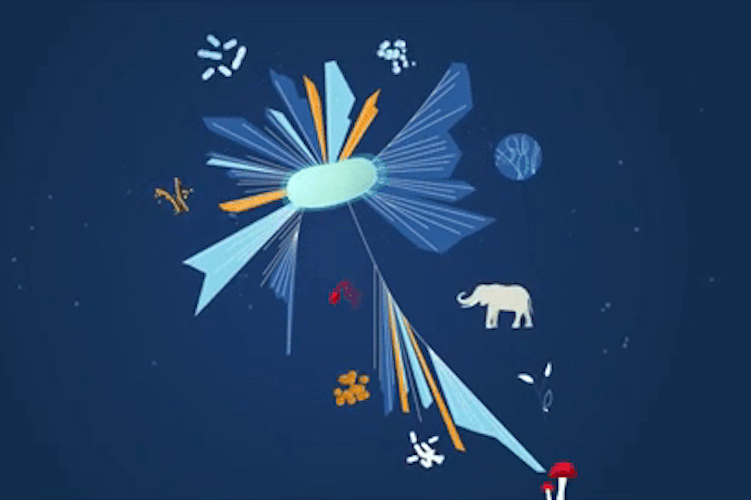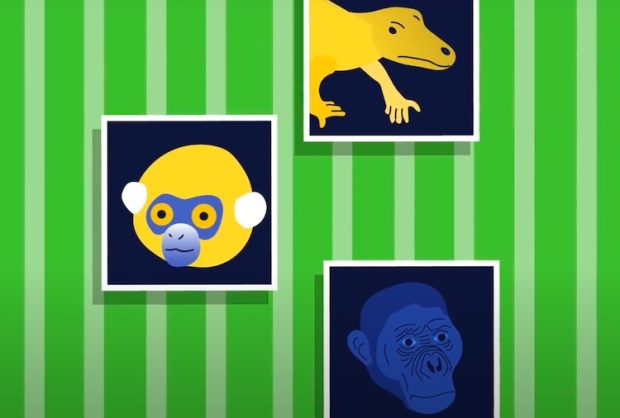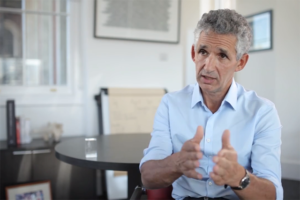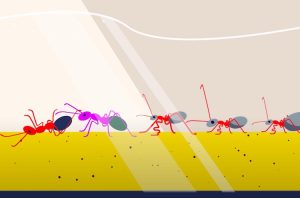Biomarkers of Aging
Biologist Tim Spector on the different ways of assessing biological age, twin studies, and the microbiome

Beyond the root of the tree of life, nearly 4 billion years into the distant past, lies the origin. During or near the origin of life, the onset of the production of proteins of specific sequences with well-defined structures and sophisticated functions launched Crick’s Central Dogma of Molecular Biology. The initial translation of messenger RNA into protein set the path of biology and established the paradigm that continues to dominate the biological earth after over 3.5 billion years.

Molecular records were made and retained during the origin of life; molecules have been faithfully replicated from then to now. Many of these molecules are small, like amino acids and sugars, and bases. However, large molecules from the origin of life are also preserved – in the ribosome. The oldest, most universal, and best-conserved macromolecules in the biological world are found in the ribosome, where mRNA is translated into protein.
Leonardo da Vinci discovered that a tree records its history in its rings. Biological molecules also record their histories. The ribosome is a lens to a world of primordial molecules from before protein synthesis. The ribosome is our molecular time machine.
In our research, we develop methods grounded in three-dimensional structures for reading primordial information stored deep within the ribosome. This information has guided us in building a highly detailed molecular-level model of the evolution of the ribosome. This model, which we call the “Accretion Model”, is comprehensive in that it describes the origins of the large ribosomal subunit, the small subunit, transfer RNA, and messenger RNA. The model describes the iterative accretion of RNA fragments in an incremental building-up of gigantic ribosomes. The timeline of the Accretion Model initiates in ancient proto-biology in the initial formation of functional centers and progresses to the establishment of the genetic code and the functional integration of polynucleotide and polypeptide. The Accretion Model provides a framework to understand the rapid ongoing increase in sizes of metazoan and especially mammalian ribosomes. Of course, the word ‘rapid’ must be interpreted here in the timeframe of a multi-billion-year process.
In 1969, Associate Professor of Microbiology Carl Woese wrote to Nobel Laureate Francis Crick seeking moral support for an investigation of the distant past. Woese wrote:
…I would be grateful… for any backing (largely moral) you could give me… if we are ever to unravel the course of events leading to the evolution of the prokaryotic (i.e., simplest) cells… this can be done by using the cell’s “internal fossil record”. The obvious choice of molecules here lies in the components of the translation apparatus. What more ancient lineage is there?
Woese was deeply insightful in choosing to concentrate on the ribosome. No other biological system could have provided the information he sought. And it worked. In 1977, Woese and research associate George Fox shook the scientific world by announcing their discovery of a third domain of life and by their fundamental revision of the Tree of Life. For determining phylogenetic relationships, Woese and Fox pioneered the use of ribosomal RNA sequencing. Their method is so powerful and pervasive that there are now around 5 million rRNA sequences in the databases.
In the early 21st century, the scientific world was rocked again, this time by the determination of high-resolution three-dimensional structures of ribosomes. Steitz, Yonath, and Ramakrishnan shared the 2009 Nobel Prize in Chemistry for this work. Ribosome structures, determined by X-ray crystallography and cryo-electron microscopy, are now available for many species and are accumulating quickly. rRNA sequences allowed microbiologists like Woese and Fox to rewrite the Tree of Life. Three-dimensional structure changes more slowly over time than sequence, providing a far more penetrating view of the distant past. Ribosomal structures allow us to excavate beyond the root of the Tree of Life.
The ribosome in three dimensions shows us that the exit tunnel was a central theme of all phases of its evolution. The tunnel was continuously extended and rigidified. The synthesis of non-coded peptides of increasing length conferred an advantage as some reaction products bound to the ribosome. The ribosome sequentially gained capabilities for RNA folding, catalysis, subunit association, correlated subunit evolution, decoding, and energy-driven translocation. Surface proteinization of the decoding ribosome was one driver of a more general proteinization of other biological processes, giving rise to modern biology. The ribosome spawned the existing symbiotic relationship of functional proteins and informational nucleic acids.

Our research foci are on dissecting and literally resurrecting the ancient ribosome. We formulate computational models and test them by experimentally rebuilding extinct macromolecules from the dawn of life to regenerate ancient functions. We rewind the “tape of life” by mapping, at the molecular level, the processes by which RNA and protein joined forces to create the ribosome – a surviving functional assembly dating from life’s origin. Through our work, we hope to reveal how the original and most profound symbiotic relationship in all of biology that of polypeptide and polynucleotide, took place and evolved to define life as we know it.

Biologist Tim Spector on the different ways of assessing biological age, twin studies, and the microbiome

New study describes genealogy and spreading of one of the most damaging species of pest ants

Biologist Steve Jones on natural selection, chimpanzees, and Queen Victoria